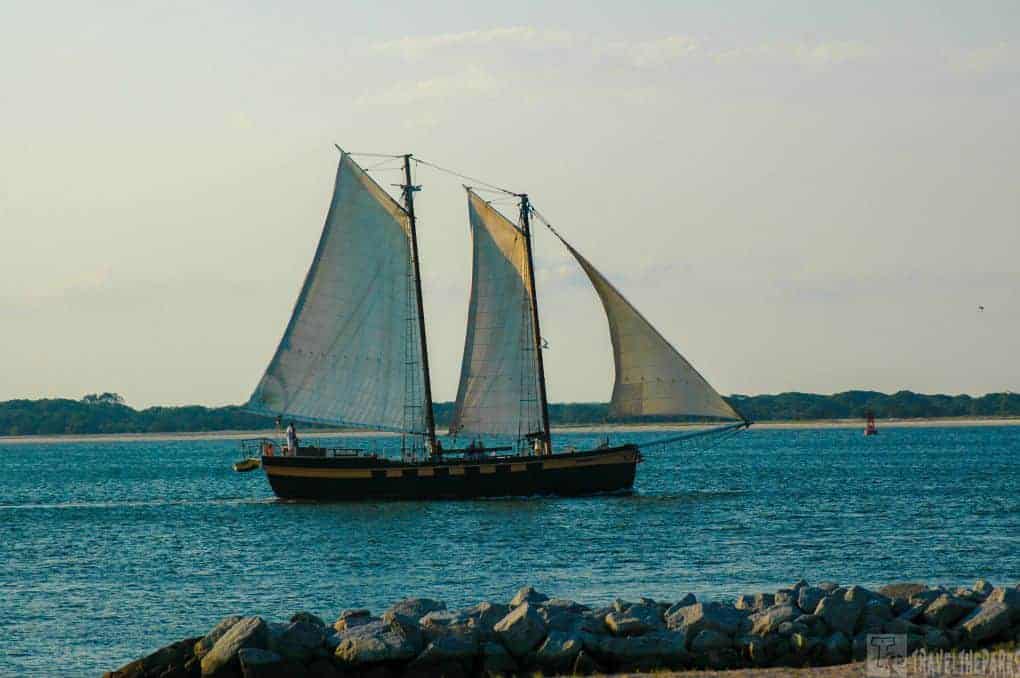We were looking to escape the busy theme parks and crowded beach towns of Florida. So, we headed to the Florida’s Forgotten Coast. From Mexico Beach to St. Marks, this quiet stretch of the Gulf feels like “Old Florida.” Life here moves slow. Anglers catch fresh fish every day. It’s a spot where you can take a deep breath and just enjoy the simple things. No big crowds, just peace and quiet.
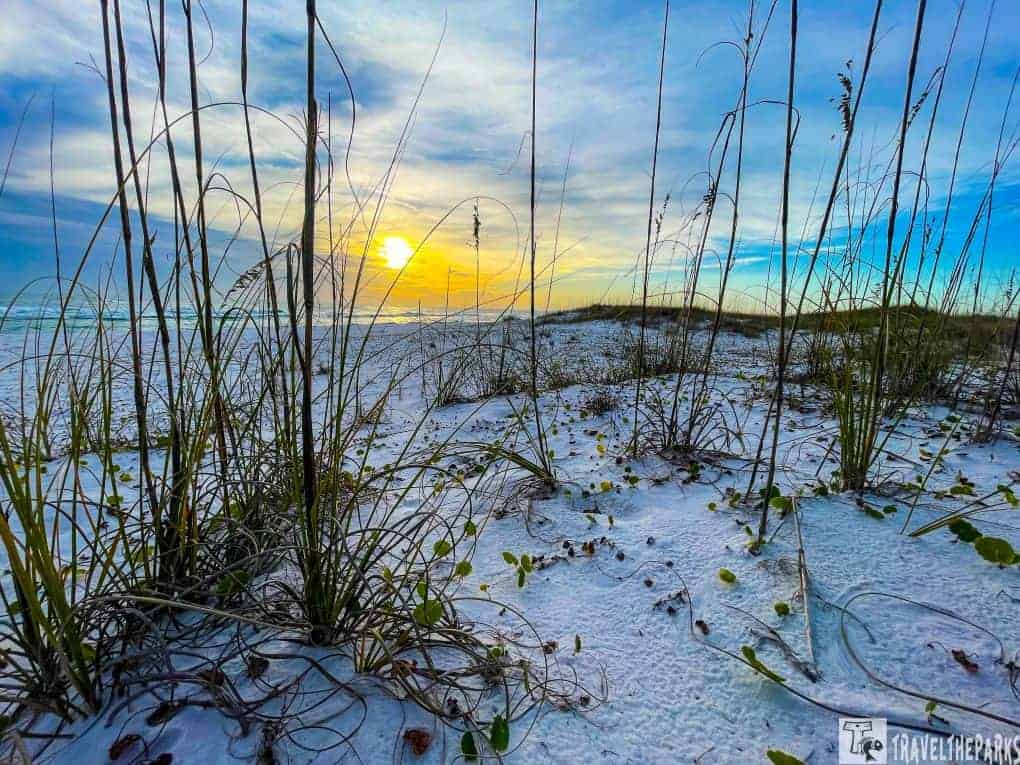
We explored Florida’s Forgotten Coast as part of a scenic road trip that also took us through the Emerald Coast, ending at the stunning Gulf Islands National Seashore in Pensacola. The contrast was part of the charm—starting with the quiet, natural beauty of places like St. Marks and Apalachicola, where old fishing towns meet wild marshes and uncrowded beaches. Then, moving west, we eased into the bright energy of the Emerald Coast, with its iconic white sand and turquoise waters. By the time we reached Pensacola, we were ready for the broad coastal vistas, historic forts, and protected dunes of the Gulf Islands National Seashore—a perfect finale to a road trip that showed us two sides of Florida’s incredible Gulf coast.
This post may contain affiliate links. This means that if you purchase something through one of these links, we may earn a small commission at no extra cost to you! Read the full disclosure policy here.
Table of Contents
What Makes It “Forgotten”?
Florida’s Forgotten Coast isn’t forgotten—merely overlooked. This 130-mile stretch of oceanfront gained its descriptive moniker in the 1990s. Residents began using it to celebrate the area’s defiance of overdevelopment. As opposed to the Miami- or Daytona-like high-rises and neon lights, this part of Florida has remained true to its heritage: untamed, unobtrusive, and thankfully unspoiled by the masses.

This is one of the last remaining tracts of Florida where ecosystems exist without interference. The Apalachicola River irrigates North America’s most diverse hotspot. Additionally, St. Joseph Bay protects rare seagrass beds critical to the sea. Extensive areas remain untouched, designated as state parks (e.g., St. George Island) or wildlife refuges. Consequently, the dunes, marshes, and forests are in their natural state.
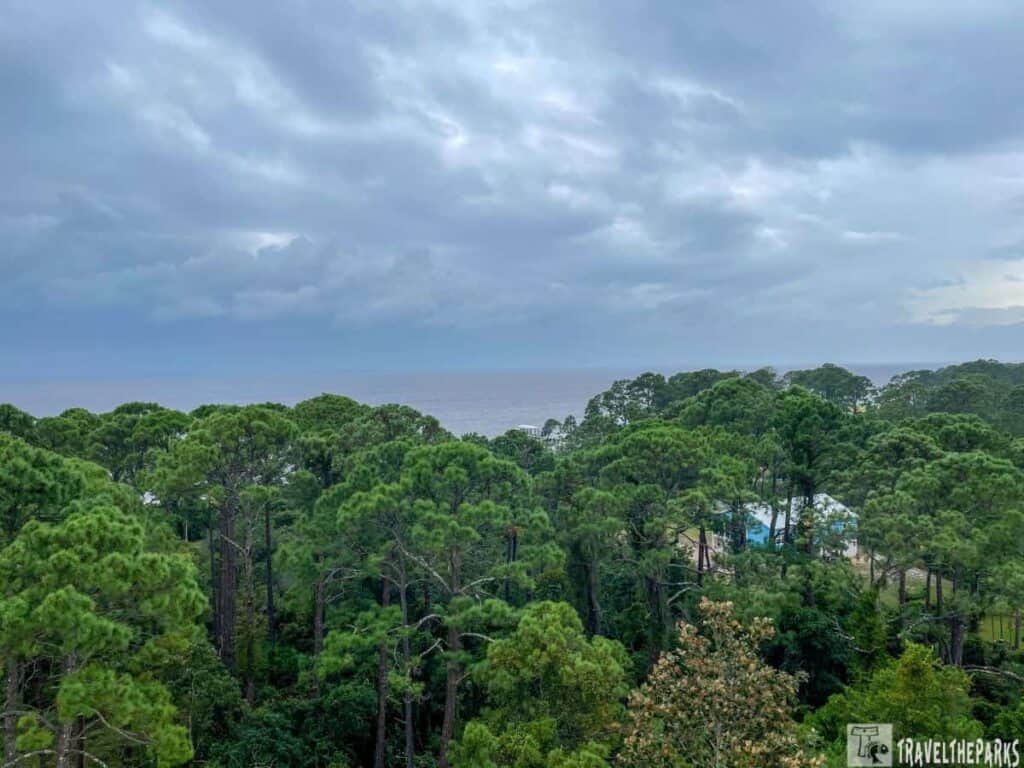
Top Places to Explore on Florida’s Forgotten Coast
There is something for everyone travelling along Florida’s Forgotten Coast. Each place we stopped brought its own mix of unique charm and friendly small-town feel. Starting in Mexico Beach, where the calm beach calls for a gentle start to your trip. Move east to Port St. Joe to eat by the water and walk by the bay.

Next was Cape San Blas. A slim peninsula with white sand beaches and far-off paths in St. Joseph Peninsula State Park. Our journey continued to Apalachicola, the cultural heart of the coast, known for its oysters, maritime heritage, and walkable downtown. Crossing the bridge to St. George Island, a barrier island paradise perfect for beachcombing and stargazing.
As we made our way to Carrabelle, we stopped by the Crooked River Lighthouse for a touch of maritime history. Next was a brief stop at Wakulla Springs State Park. Wrap your journey in St. Marks, where coastal trails, a historic lighthouse, and the peaceful waters of San Marcos de Apalache await. Every stop tells a story—and none of them feels rushed.
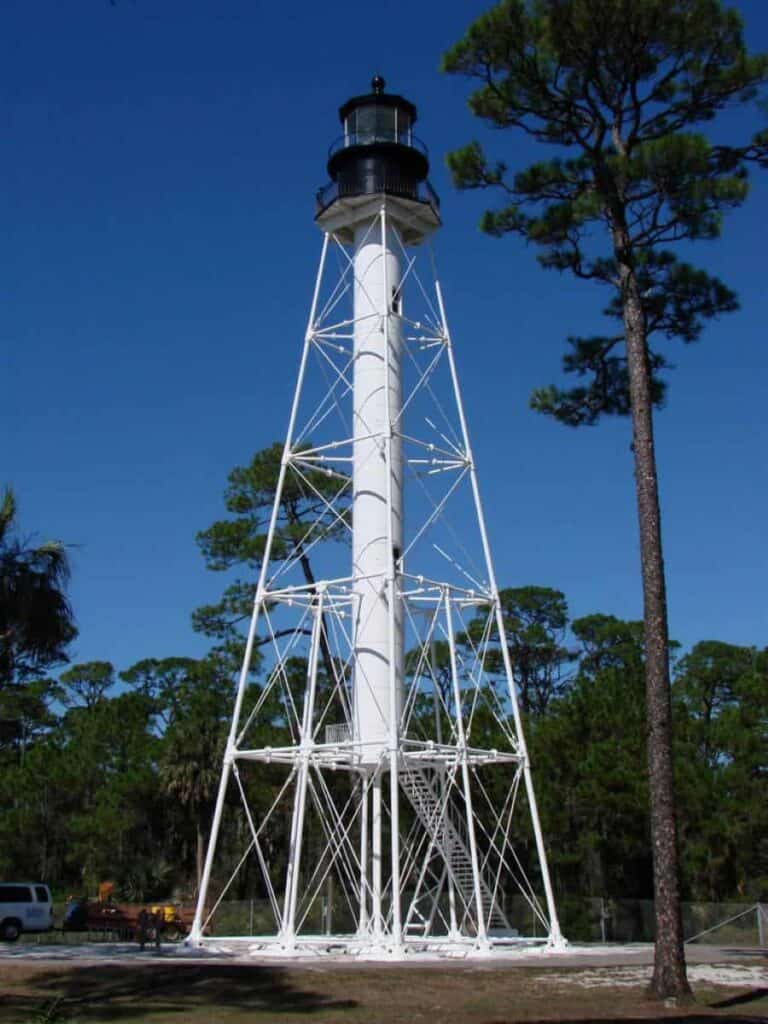
Cape San Blas & St. Joseph Peninsula State Park: Where Wild Beauty Thrives
If you’re searching for a slice of Florida that feels frozen in time, visit Cape San Blas and St. Joseph Peninsula State Park. This windswept peninsula, with its untouched beauty and unspoiled beaches, is a haven for nature lovers. It’s a place where you can hike through coastal scrub forests. You can paddle the clear, shallow waters of St. Joseph Bay or simply relax on powdery white sand. The only marks you might find on the sand are from seabirds or nesting sea turtles.
Unlike developed beach towns, Cape San Blas stands out from busier beach spots. It is free from tall buildings and, best of all, the vast crowds. Here, the famed Cape San Blas Lighthouse, a candy-striped watchtower that has aided sailors since 1885, defines the skyline. Afterwards, indulge in fresh Gulf seafood at the waterfront shack Indian Pass Raw Bar.
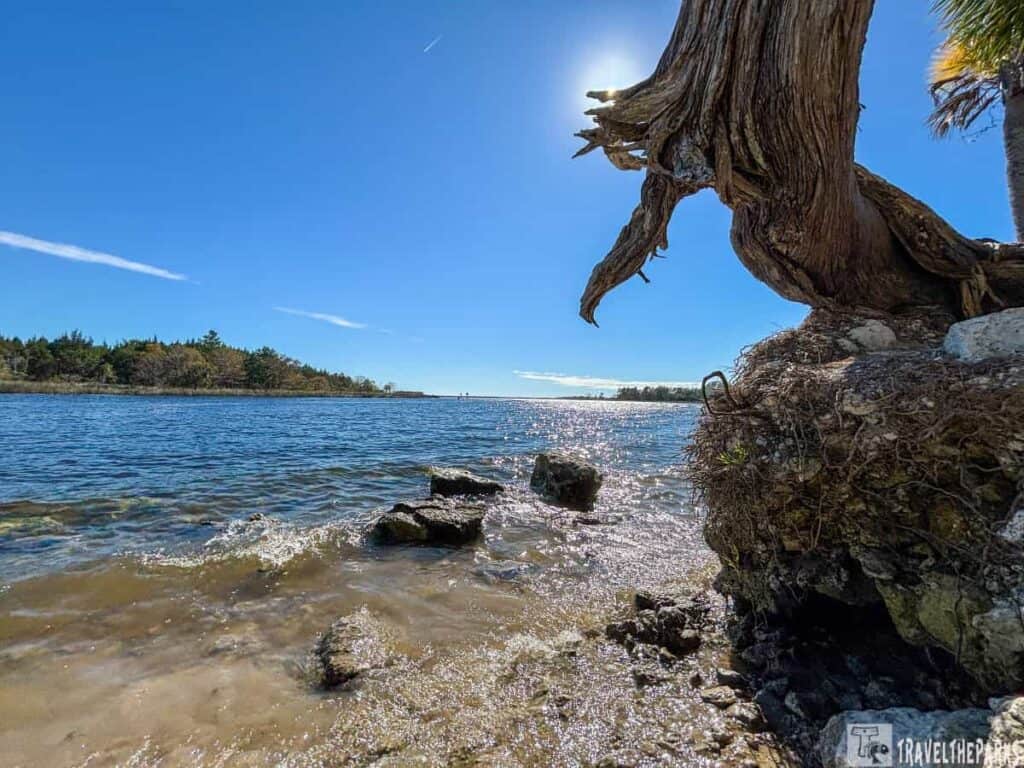
Apalachicola: A Timeless Treasure on Florida’s Forgotten Coast
Step into a town where time seems to slow. Shrimp boats bob in the harbor, and the scent of fresh oysters lingers in the salty air. Apalachicola is a rare sweet spot on Florida’s Forgotten Coast. It blends Gulf Coast life with warm Southern charm. Famous for its fine oysters and well-kept old buildings from the 19th century, this busy port town shows a slice of Old Florida that is fading fast.
Start with the Apalachicola River, where the town’s love for the sea is clear. Watch fishermen bring in their haul at Grady Market or walk the docks to see shrimp boats and sailboats at rest in the bay. You might not know that Apalachicola Bay used to give 90% of Florida’s oysters. Even if that has dropped, the town still enjoys its salty riches. Make sure to visit the Apalachicola Maritime Museum. There, you can look at old ships or go for a sunset sail.
PRO Tip: For a sweet treat, try Apalachicola’s famous homemade ice cream at The Tin Shed.

St. George Island State Park: Untamed Beauty on Florida’s Forgotten Coast
In contrast with crowded Gulf Coast beaches, St. George’s beaches remain unspoiled. Soft sand lies dotted with shells, not people. St. George Island State Park offers a 2,023-acre oasis at the heart of Florida’s Forgotten Coast. With nine miles of unspoiled beach, protected ecosystems, and no high-rises, this barrier island is a tribute to Old Florida. It is a place where nature remains in charge. St. George Island State Park embodies the essence of Florida’s Forgotten Coast. It is a place of natural beauty, slow pace, and unspoiled views.
A must is to ascend the 92 steps of the Cape St. George Lighthouse for a bird’s-eye perspective on the Gulf, Apalachicola Bay, and pine-dotted dunes. Though the original 1852 lighthouse was destroyed, a replica now stands at the heart of the island.
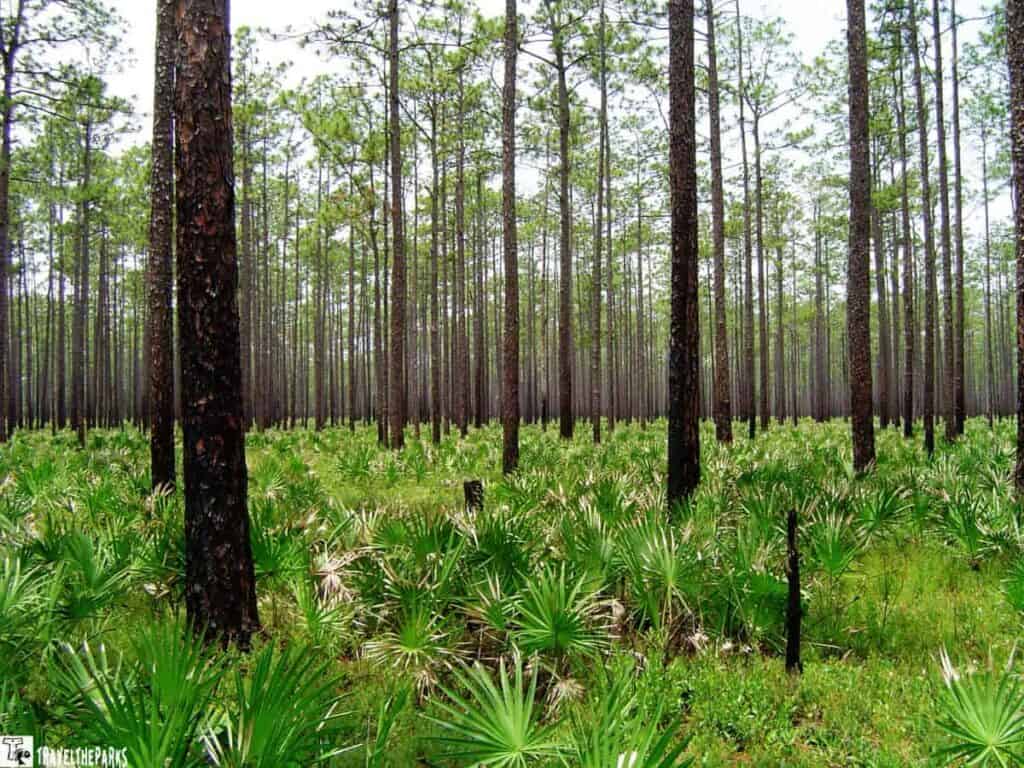
Tate’s Hell State Forest: Adventure Awaits in the Wild Heart of the Forgotten Coast
Named after a chilling local legend—a 19th-century farmer who wandered the swamp for days before emerging with the words, “My name is Cebe Tate, and I just came from Hell”—Tate’s Hell State Forest is as wild and mysterious as its name suggests.
Spanning 202,000 acres, this remote expanse of Florida wilderness has a true off-the-grid vibe. While camping off-grid here, we paddled the smooth blackwater creeks, shaded by shadowing cypress and draped in Spanish moss. Hike through pine flatwoods and wet prairie, where you might glimpse black bears, or a rare orchid, or a brilliant flash of songbird color.
For those who want to be alone, look at starry skies and unbridled beauty, Tate’s Hell is not a stopover but a destination. Nature here is supreme, and adventure surrounds every silent, moss-shrouded turn.
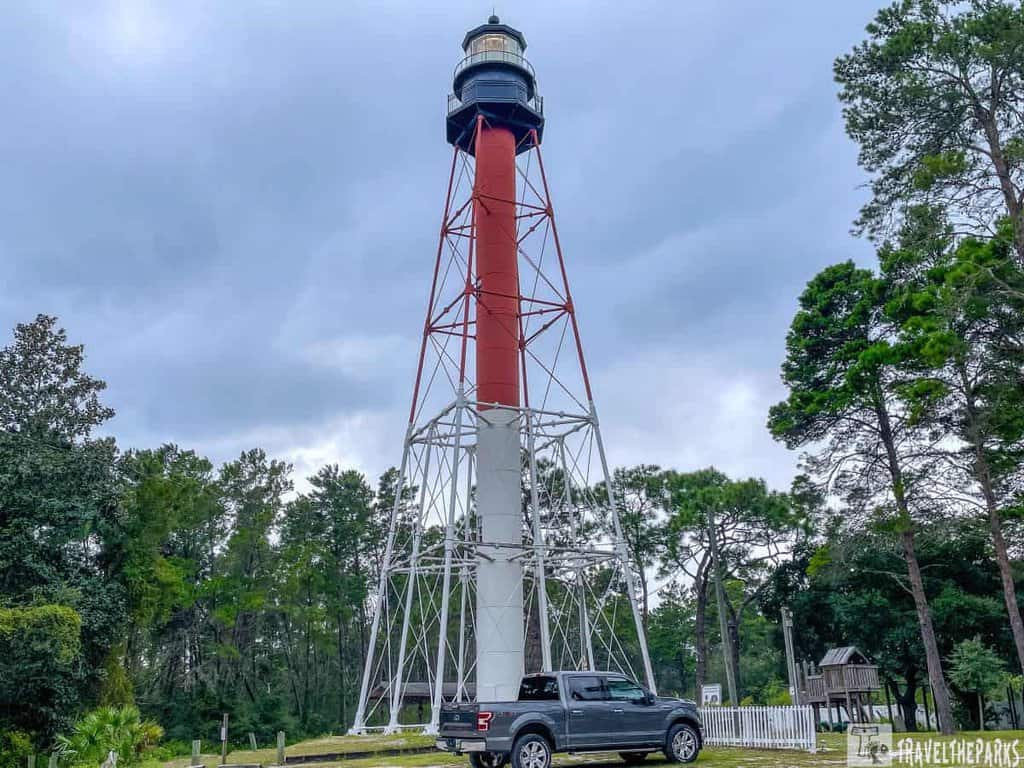
Carrabelle: Small-Town Vibes on the Gulf
We wanted some seaside fun, but not with too many people. Carrabelle was just right for us. Carrabelle was our sort of place. The easy-going fishing town offers sea air, delightful views over the water, and a warm, local feel that’s getting rare in Florida. Enjoying fresh seafood at a place by the dock, combined with a visit to the Crooked River Lighthouse for panoramic vistas and a dose of maritime history. This unpretentious fishing village is a real gem of the Forgotten Coast.
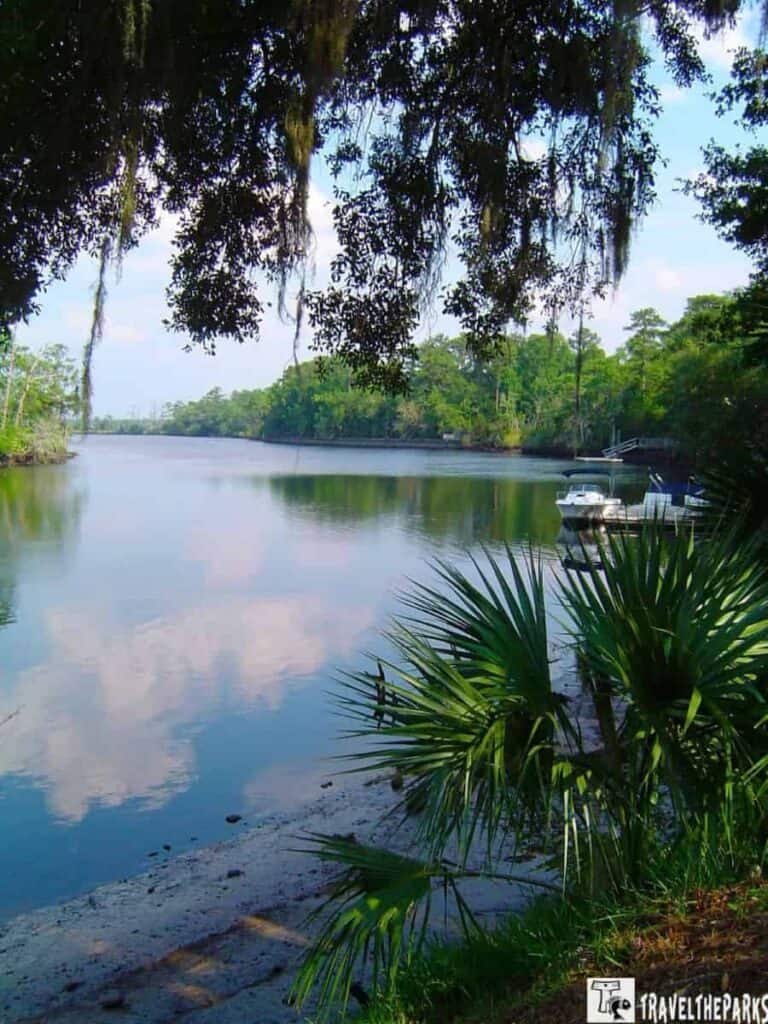
Alligator Point & Panacea: Coastal Charm & Culinary Delights
No traffic lights, no tall buildings—just weathered motels, worn docks, and folks who’ll wave when you go by. This slender barrier island serves up miles of quiet, sugar-sand beaches perfect for shelling, sunbathing, or spotting dolphins offshore. Just north lies Bald Point State Park. This was where we explored hiking trails winding through picturesque dunes and pine forests. We kept our eyes peeled for alligators in the nearby marshes while watching ospreys diving for dinner. When you visit, don’t miss the Salty Donkey, a delightful hidden gem on Dickerson Bay. This dog-friendly eatery serves up fresh seafood, hearty sandwiches, and refreshing drinks beneath a tiki hut, making it the perfect place for a leisurely lunch or a sunset dinner.
PRO Tip: Best times to visit: spring and fall for mild weather and fewer crowds. Pack binoculars, a good book, and your sense of adventure—this is Florida at its most raw and beautiful.

San Marcos de Apalache Historic State Park: A Portal to Florida’s Past
Marcos de Apalache Historic State Park breathes life into the fascinating history of the St. Marks area. Constructed upon the weathered foundations of a 17th-century Spanish fort, later claimed by Confederate soldiers during the Civil War. Exploring the site was a treat: we found a great museum, walked on paths with shade, and saw where the waterways met. At the point where the Wakulla River and St. Marks River converge, our adventure took us through crumbling fortification remnants before we ascended the observation deck for spectacular vistas. The Forgotten Coast reminds us why some places are worth keeping secret.

A Day at Wakulla Springs, Where Crystal Waters Meet Timeless Magic
Deep in the heart of Florida’s Forgotten Coast lies Wakulla Springs State Park, home to one of the world’s largest and deepest freshwater springs. This place feels worlds away—a portal to a Florida where untamed wilderness and vintage charm collide. We were instantly captivated by the spring’s magnificent splendor; an astonishing 250 million gallons of crystal-clear water erupts daily from this natural wonder.
Our adventure began with a thrilling guided riverboat tour, where we glided past sunbathing alligators, gentle manatees, and elegant snowy egrets thriving in their pristine habitat. As the day’s heat intensified, we sought refuge in the park’s crowning achievement: the historic 1930s Lodge at Wakulla Springs, a testament to old Florida charm. With its soaring ceilings, hand-painted murals, and old-school soda fountain gives you a warm, southern, elegant feel. With paths to walk, wildlife to see, and a link to movie history (yes, Creature from the Black Lagoon was shot here!), Wakulla Springs helped us see a quiet, wild part of Florida.
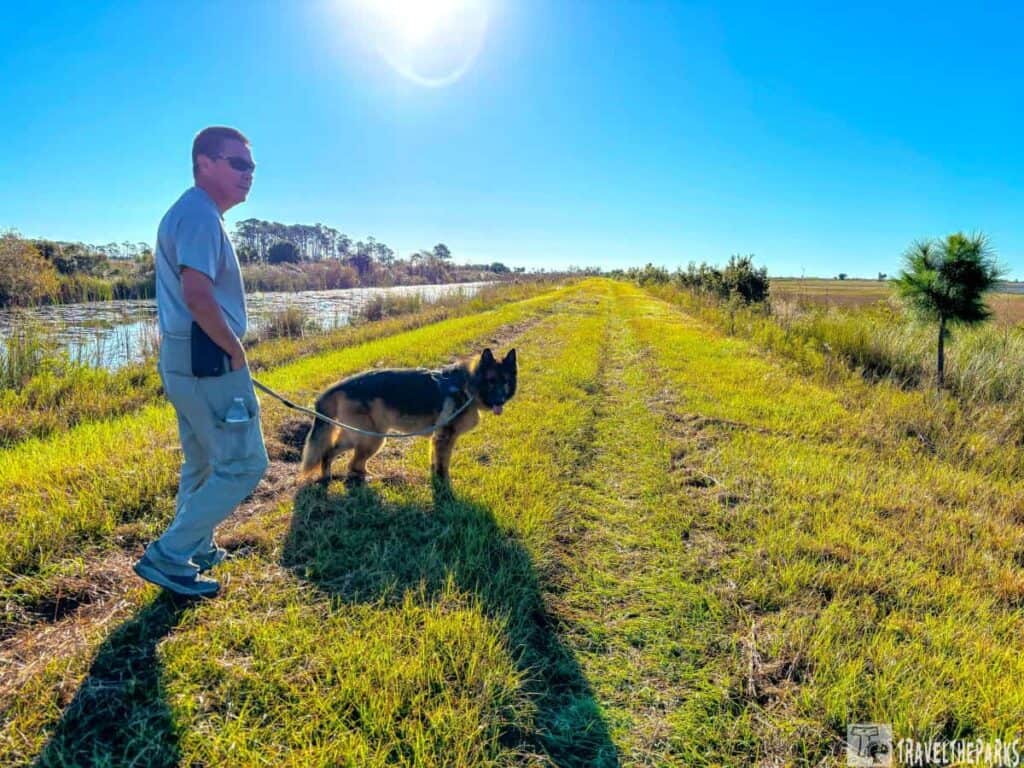
St. Marks National Wildlife Refuge: A Sanctuary for Wildlife and Wonder
Set by the Gulf Coast, St. Marks National Wildlife Refuge is a calm spot for both wild animals and people looking for peace. Established in 1931, as one of America’s earliest wildlife sanctuaries. It encompasses over 80,000 acres of salt marshes, tidal creeks, and pine woods. The iconic St. Marks Lighthouse, a beacon since 1832, anchors this barrier island. Birders flock here to spot migrating waterfowl such as roseate spoonbills. We made the most of our time by kayaking through glassy, mirror-like waterways, casting lines in quiet backwater ponds, and hiking along grass-lined levee trails. You will want to wear comfortable walking shoes. Bring plenty of water, sunscreen, and binoculars for birdwatching.

Where to Eat and Stay Near St. Marks: BBQ Comfort & Riverside Camping
Staying at Newport Park Campground was the perfect way to soak in the quiet charm of Florida’s Forgotten Coast. Nestled along the St. Marks River and just minutes from the wildlife refuge, this peaceful spot gave us easy access to scenic trails, birdwatching, and some of the best sunrises we’ve seen. With full hookups, clean showers, and a laid-back vibe, it was a great basecamp for exploring nearby St. Marks and enjoying the slower pace of life this region is known for.
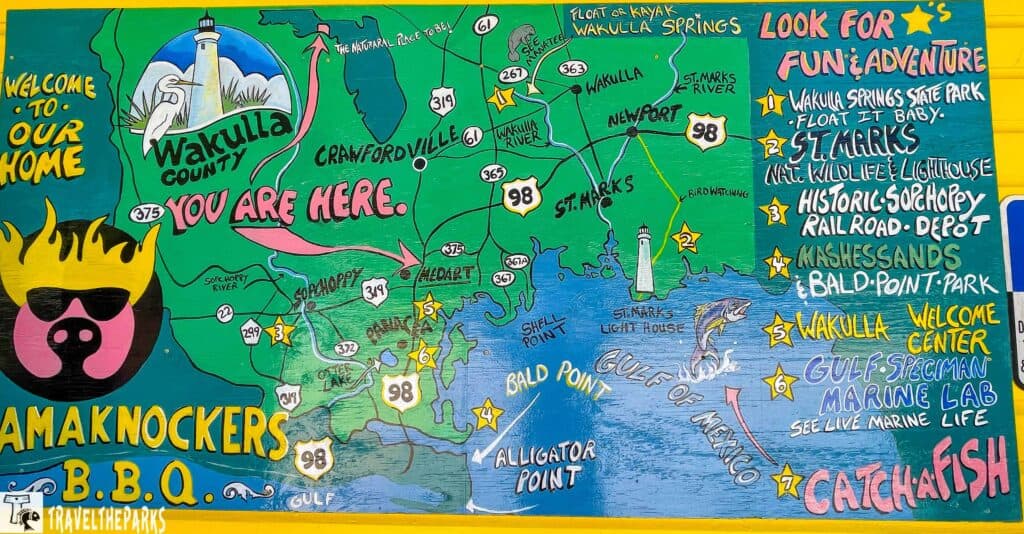
If you’re cruising through Crawfordville, Hama knockers BBQ is a must-stop for hearty, no-frills Southern flavor. Family-owned and operated since 2004, this local favorite serves up smoky, tender barbecue in a laid-back, friendly atmosphere. From pulled pork and ribs to homemade sides and signature sauces, it’s comfort food done right—and perfect after a day exploring the Forgotten Coast.

Final Thoughts: Discovering Florida’s Forgotten Coast: Untouched Beaches, Quaint Towns & Timeless Charm
Florida’s Forgotten Coast is where time stands still, nature reigns supreme, and the spirit of Old Florida lingers in every breeze. From private beaches and retro lighthouses to serene fishing towns and wild pinewoods, each detour along this route reveals some aspect of the state that’s truly untamed.
What sets the Forgotten Coast apart is its authenticity. Whether you’re strolling through windswept shores, paddling across calm backwater creeks, or enjoying recently caught seafood off the bay, this part of Florida presents the opportunity to unplug, inhale deeply, and get in touch with the more natural Florida. It’s not a place—it’s a return to what travel is about.
Have you been to Florida’s Forgotten Coast? We’d love to hear about your favorite hidden spots, must-try seafood shacks, or peaceful places to unwind. Drop a comment below and share your stories—let’s swap road trip tips!




